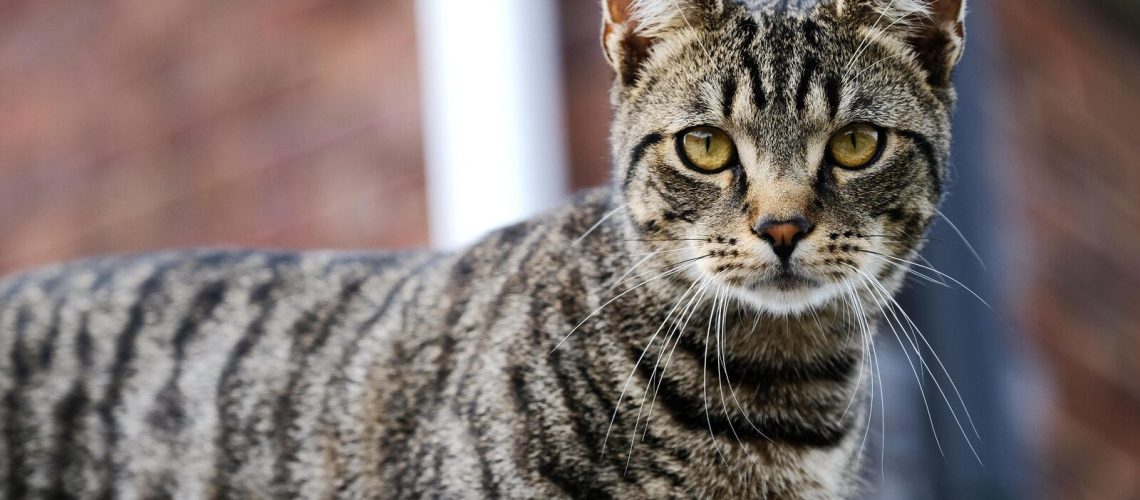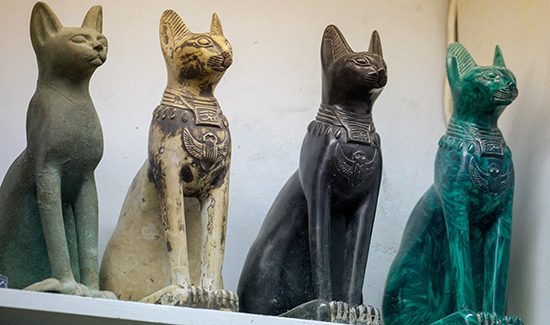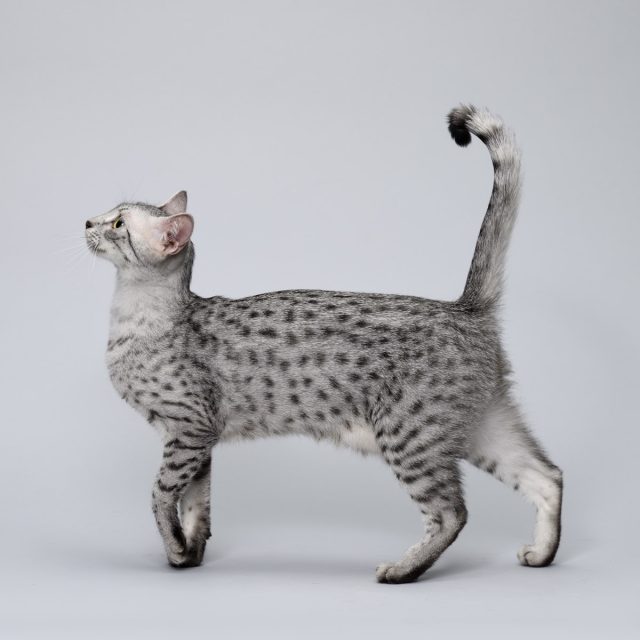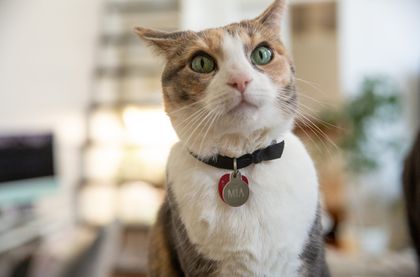Are you ready to unlock the hidden secrets behind those adorable striped felines known as tabby cats? Brace yourself for a journey into the fascinating world of these mysterious creatures, where every stripe tells a story.
Key Takeaways:
- Tabby cats have a genetic mutation that causes their distinctive striped coat pattern.
- The origins of tabby cats can be traced back to the ancient Egyptian civilization.
- Tabby cats were highly regarded and often depicted in ancient Egyptian art and mythology.
- The tabby coat pattern is not exclusive to domestic cats and can also be found in wild feline species.
- The genetic mutation responsible for the tabby coat pattern is believed to provide camouflage and protection in the wild.
Unraveling the Origin of Tabby Cats: Exploring "Striped Secrets"
The Mystery Behind Tabby Cat Stripes
Tabby cats are known for their unique striped patterns, but have you ever wondered how they got them? The secret lies in their genes. Tabby cats have a special gene called the agouti gene, which controls the distribution of pigment in their fur. This gene creates the beautiful stripes and swirls that we see on tabby cats.
The agouti gene works by regulating the production of two types of pigment: eumelanin, which is responsible for black or dark brown color, and pheomelanin, which produces red or orange color. The interaction between these two pigments creates different patterns on a tabby cat's fur, such as classic stripes, mackerel stripes, or even spots.
A Closer Look at Tabby Cat Coat Patterns
Tabby cats come in various coat patterns, each with its own unique charm. Let's explore some of the most common ones:
- Classic Tabby: This pattern features bold, swirling stripes that form a marbled effect on the cat's fur.
- Mackerel Tabby: In this pattern, narrow and parallel stripes run vertically along the cat's body like fishbones.
- Spotted Tabby: Instead of stripes, spotted tabbies have round or oval-shaped spots scattered across their coat.
- Ticked tabbies have a more subtle pattern where each hair is banded with alternating light and dark colors.
The Evolutionary Advantage of Tabby Cat Stripes
You might be wondering why tabby cats developed these distinctive coat patterns in the first place. One theory suggests that their stripes and patterns help them blend into their surroundings, providing camouflage while hunting or hiding from predators. The stripes can break up their outline, making it harder for other animals to spot them.
Additionally, the unique patterns of tabby cats may have served as a form of communication between cats. Just like how humans use body language and facial expressions to convey messages, tabby cats might use their coat patterns to communicate with other cats, signaling dominance or submission.
The Unique Striped Patterns of Tabby Cats: How Did They Get Them?
The Role of Genetics in Tabby Cat Coat Patterns
Have you ever wondered why some tabby cats have bold stripes while others have more subtle markings? The answer lies in their genetics. The agouti gene is responsible for determining the type and intensity of the coat pattern in a tabby cat.
The agouti gene comes in different variants, or alleles, which can affect the expression of the coat pattern. For example, one allele may result in a classic tabby pattern with bold swirls, while another allele may produce a mackerel tabby pattern with narrow stripes.
The Influence of Other Genes on Tabby Cat Coat Patterns
While the agouti gene plays a significant role in creating tabby cat coat patterns, other genes also contribute to their unique appearances. Genes related to pigmentation can influence the colors present in a tabby cat's fur. For instance, a gene called MC1R determines whether a cat will have black or orange pigment.
In addition to pigmentation genes, there are genes that control the length and texture of a cat's fur. These genes can affect how well-defined the stripes or spots appear on a tabby cat. Environmental factors, such as temperature and nutrition, can also influence the development of a tabby cat's coat pattern.
The Fascinating World of Tabby Cat Genetics
Understanding the genetics behind tabby cat coat patterns can be like unraveling a fascinating puzzle. Scientists continue to study these genes to gain a deeper understanding of how they work together to create the unique striped patterns we see in tabby cats. By studying their genetics, we can learn more about the evolutionary history of these beloved feline companions.
When Did Humans First Encounter Tabby Cats? Exploring Their History
The Ancient Origins of Tabby Cats
Tabby cats have a long and fascinating history that dates back thousands of years. The earliest evidence of tabby cats can be traced back to ancient Egypt, where they were revered and even worshipped as sacred animals. Egyptian artwork from around 4,000 years ago depicts tabby cats with their distinctive striped coats. These cats were not only kept as pets but also served a practical purpose in controlling pests such as mice and rats.
Tabby Cats in Medieval Europe
During the Middle Ages, tabby cats gained popularity in Europe. They were highly valued for their hunting skills and ability to keep homes free from vermin. In fact, owning a tabby cat was often seen as a sign of good fortune and prosperity. Tabby cats became cherished companions to people from all walks of life, including nobles, merchants, and peasants.
The Influence of Tabby Cats on Art and Literature
Tabby cats have also left their mark on the world of art and literature throughout history. Many famous artists, such as Leonardo da Vinci and Pierre-Auguste Renoir, included tabbies in their paintings. In literature, tabby cats have been featured in various works, including Lewis Carroll's "Alice's Adventures in Wonderland" and T.S. Eliot's "Old Possum's Book of Practical Cats."
Overall, the history of tabby cats is rich and diverse, spanning across different cultures and time periods. These beloved feline companions have been cherished by humans for centuries due to their beauty, intelligence, and helpful nature.
The Popularity of Tabby Cats as Pets: What Makes Them Special?
Affectionate Companionship
One of the reasons why tabby cats are so popular as pets is their affectionate nature. They have a reputation for being friendly, social, and loving towards their human companions. Tabby cats often enjoy cuddling, purring, and seeking attention from their owners. Their playful and gentle personalities make them ideal companions for individuals or families looking for a loyal and loving pet.
Adaptable and Easy to Care For
Tabby cats are known for their adaptability and resilience. Whether they live in an apartment or a house with a backyard, tabbies can adjust to different living environments. They are also generally low-maintenance when it comes to grooming. Their short fur requires minimal brushing, making it easier for busy pet owners to care for them.
The Unique Charm of Tabby Cat Personalities
Each tabby cat has its own unique personality traits that make them special. Some may be more adventurous and outgoing, while others may be calm and reserved. This diversity in personalities adds to the charm of tabbies as pets. Whether you prefer an active playmate or a relaxed lap cat, there's likely a tabby cat out there that matches your preferences.
In conclusion, the popularity of tabby cats as pets can be attributed to their affectionate nature, adaptability, and unique personalities. These qualities make them wonderful companions for individuals or families seeking the love and companionship of a feline friend.
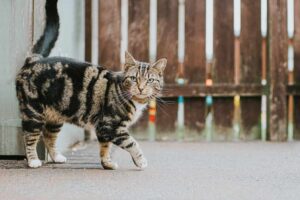
Tabby Cats: More Than Just Stripes! Exploring their Color Variations
The Classic Tabby Pattern
When we think of tabby cats, we often picture the classic pattern of bold stripes on their coats. This pattern is called the "mackerel" or "striped" tabby pattern. The stripes run parallel along the cat's body from its spine down to its belly. These stripes can vary in thickness and intensity, creating unique and beautiful patterns on each tabby cat.
Beyond Stripes: Other Tabby Patterns
While the striped pattern is the most common, tabby cats can also exhibit other patterns. One such pattern is the "spotted" tabby, where the stripes are broken up into spots or rosettes. This pattern resembles that of a leopard or cheetah. Another variation is the "ticked" tabby pattern, where the individual hairs have alternating bands of light and dark colors, giving the cat a speckled appearance.
A Rainbow of Colors
Tabby cats come in a wide range of colors beyond their patterns. They can be found in shades of brown, gray, black, orange, and even silver. Some tabbies may have additional color variations such as tortoiseshell (a mix of black and orange), calico (a mix of white, black, and orange), or dilute (pale pastel colors). The combination of different patterns and colors makes each tabby cat truly unique.
In summary, tabby cats are not limited to just striped coats. They can display various patterns such as spots or ticks, and come in a diverse array of colors. The beauty and variety found within the world of tabby cats make them visually captivating companions.
All in the Family: Are All Tabby Cats Descendants of a Common Ancestor?
The Genetic Basis of Tabby Coat Patterns
Tabby coat patterns are determined by specific genes that control pigmentation and hair growth in cats. These genes interact with each other to produce different coat patterns seen in tabbies. While all domestic cats share a common ancestor with wildcats like the African wildcat (Felis lybica), not all domestic cats have the same genetic makeup that produces tabby patterns.
Tabby Cats as a Result of Genetic Variations
The tabby coat pattern is believed to have originated from natural genetic variations that occurred over time. These variations led to the development of different coat patterns seen in tabbies today. Some genetic variations result in the classic striped pattern, while others give rise to spotted or ticked patterns. These variations can occur within specific breeds or across different breeds of domestic cats.
The Influence of Selective Breeding
Selective breeding by humans has also played a role in shaping the diversity of tabby cats. Breeders have selectively bred cats with desired coat patterns, resulting in specific breeds known for their distinct tabby patterns. However, it's important to note that not all tabby cats are purebred or the result of intentional breeding. Many tabbies are mixed-breed cats with diverse genetic backgrounds.
While all tabby cats share a common ancestry with wildcats, their specific coat patterns are the result of genetic variations and selective breeding. The fascinating genetics behind tabby cats contribute to their unique and diverse appearances.
Caring for Tabby Cats: How Understanding Their Origin Can Help Us Provide Better Care
Nutritional Needs Based on Ancestral Diet
Understanding the origins of tabby cats can guide us in providing them with appropriate nutrition. As descendants of wildcats, tabbies have retained some dietary preferences from their ancestors. They are obligate carnivores, meaning they require a diet primarily composed of animal protein. High-quality commercial cat foods that contain meat as the main ingredient are essential for meeting their nutritional needs.
Environmental Enrichment for Natural Behaviors
Tabby cats have inherited certain behaviors from their wild ancestors, such as hunting instincts and territorial marking. Providing environmental enrichment can help satisfy these natural behaviors and prevent behavioral issues. Interactive toys, scratching posts, and vertical spaces for climbing can mimic the hunting and territorial behaviors of wildcats, keeping tabbies mentally stimulated and physically active.
Regular Veterinary Care for Optimal Health
Just like any other cat, tabby cats require regular veterinary care to ensure their overall health and well-being. Routine vaccinations, annual check-ups, and preventive measures against parasites are essential. Additionally, spaying or neutering is recommended to prevent unwanted litters and certain health issues. Regular dental care, such as brushing their teeth or providing dental treats, can also help maintain their oral health.
Understanding the origins of tabby cats can guide us in providing them with appropriate nutrition, environmental enrichment, and regular veterinary care. By meeting their specific needs based on their ancestral traits, we can ensure that tabby cats live happy and healthy lives as our beloved companions.
In conclusion, tabby cats have a fascinating history that dates back thousands of years. Their striped patterns are believed to be inherited from their wild ancestors, and through genetic variations, they have become the adorable and unique pets we know today.
What did tabby cats originate from?
The origin of Tabby cats is believed to have originated from the mackerel pattern, which is the natural coat pattern of the African wildcat. This pattern is thought to have evolved into the various Tabby patterns seen today.
How did tabby cats get their stripes?
In a recent study published in the journal Nature Communications, a group of geneticists revealed their discovery of a specific gene in domestic cats that is responsible for the formation of the recognizable tabby stripe pattern. Interestingly, the pattern can be observed in the cat's embryonic tissue even before the development of hair follicles. This finding provides valuable insights into the genetic basis of the tabby stripe pattern in cats.
What is the mythology of the tabby cat?
According to the popular legend, as the infant Jesus felt cold in the manger on the night of his birth, a small tabby cat entered the humble crib to provide warmth with its fur. Mary expressed gratitude by touching the cat and giving it the initial "M" on its forehead as a symbol of love and appreciation.
What is the rarest thing in tabby cat?
The Ticked Tabby is a unique type of cat with multiple colors on each strand of hair, which causes the distinct tabby markings to appear diluted. According to Lyons, the ticked tabby is considered the rarest among the group, and the Abyssinian breed is a good example of this trait.
Why are tabby cats so special?
Tabbies are known for their affectionate and intelligent nature. These special cats enjoy cuddling and require ample attention. However, if their desires are not met, tabbies can become irritable. Their high level of intelligence often results in them getting their way.
What is unique about tabby cats?
Tabby cats have a distinct marking in the shape of an "m" on their forehead, which gives them their iconic furrowed brow expression. This marking has been the subject of legends in many cultures. In Egyptian mythology, the "M" represents the word "mau," which means "cat" and also describes the sound that they make.



